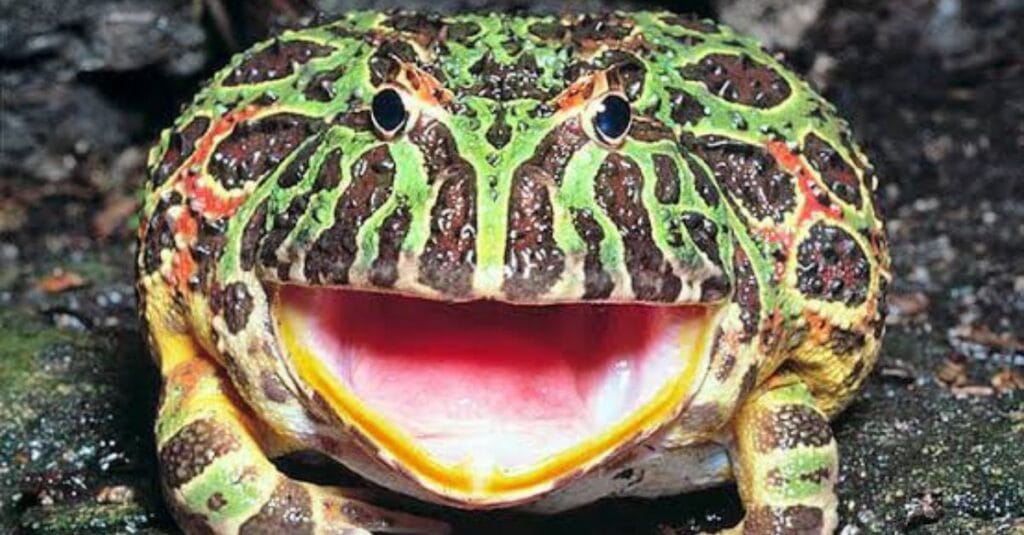🐸 Best Substrate for Pacman Frogs
Top Bedding Options for a Healthy, Happy Frog
Best Substrate for Pacman Frogs - At a Glance
Choosing the best substrate for your Pacman frog is critical for health and comfort. Coconut fiber, organic topsoil, and sphagnum moss are top choices. Avoid gravel, bark, or sand to prevent impaction. Learn how to build the perfect moist, burrow-friendly foundation for your frog’s enclosure.
🧠 Why Substrate Matters
Pacman frogs are ambush predators that love to burrow. A moist, clean, and soft substrate isn’t just for aesthetics—it’s essential to your frog’s health. The right bedding helps regulate humidity, supports skin moisture, and allows natural behaviors. The wrong one? It can lead to deadly impaction, mold, or bacterial growth.
Top 3 Recommended Substrates for Pacman Frogs
1. Coconut Fiber (Eco Earth or Plantation Soil)
Best Overall Choice
Holds moisture extremely well
Easy for frogs to burrow into
Natural and safe if ingested in small amounts
Biodegradable and odor-neutral
Readily available at pet stores and online
Pro Tip: Moisten it with dechlorinated water before use, but don’t soak it to the point of puddling.
2. Organic Topsoil (Chemical-Free)
Best for Naturalistic Enclosures
Natural look and feel
Great burrowing medium
Often used in bioactive terrariums
Must be pesticide and fertilizer-free
Look for organic potting soil with no added perlite, vermiculite, or synthetic chemicals
3. Sphagnum Moss (As a Top Layer)
Best Moisture-Holding Topper
Excellent for retaining surface humidity
Helps keep skin hydrated during shedding
Soft and comfortable
Works great layered over coconut fiber or topsoil
Do not use moss alone as the only substrate—it doesn’t allow proper burrowing depth or structure.
Substrates to Avoid (Dangerous for Pacman Frogs)
| Substrate | Why It’s Unsafe |
|---|---|
| Gravel or pebbles | Risk of impaction if ingested |
| Sand | Easily swallowed, clogs digestive system |
| Bark chips | Sharp edges can injure and mold quickly |
| Paper towels | Sharp edges can injure and mold quickly |
| Reptile carpet | Doesn’t hold moisture, not burrowable |
Impaction is a leading cause of death in Pacman frogs. Always avoid substrates that can be accidentally consumed or have sharp edges.

Substrate Depth & Maintenance
How Deep Should the Substrate Be?
Minimum: 3 inches
Ideal: 4–5 inches for adult frogs who love to burrow
Maintenance Tips:
Spot-clean daily (remove waste and uneaten food)
Replace substrate completely every 4–6 weeks
Avoid oversaturating the bedding—moist, not muddy!
🌡️ Combine good substrate with consistent misting to maintain 60–80% humidity.
Should You Use a Bioactive Substrate?
For advanced keepers, bioactive substrates with springtails, isopods, and live plants create a self-cleaning ecosystem.
Pros:
Naturally breaks down waste
Supports a more natural environment
Reduces cleaning frequency
Cons:
Requires more setup and maintenance
Not recommended for beginners

🛠️ How to Set Up the Substrate Layer (Step-by-Step)
- Choose your base substrate (coconut fiber or organic soil)
- Add 3–5 inches across the bottom of the tank
- Mist to achieve damp, mold-resistant consistency
- (Optional) Add sphagnum moss or leaf litter as a top layer
- Place décor on top—avoid compacting the substrate under hides or dishes
🔗 Related Articles You Might Like
Final Thoughts
Your Pacman frog’s health starts from the ground up. A soft, moist, burrow-friendly substrate like coconut fiber or organic topsoil is the safest and most effective base for any enclosure. Pair it with good cleaning practices and proper humidity, and you’ve got a happy, thriving frog.
🙋♂️ FAQ: Common Questions About Pacman Frog Substrate
Q: Can I mix substrates?
A: Yes! Many keepers mix coconut fiber and topsoil, or layer moss over fiber for added humidity.
Q: How often should I replace the substrate?
A: Every 4–6 weeks, or immediately if it smells, molds, or becomes saturated.
Q: Can I use paper towels for baby frogs?
A: For short-term use or quarantine, yes. But transition to proper substrate for long-term health.
